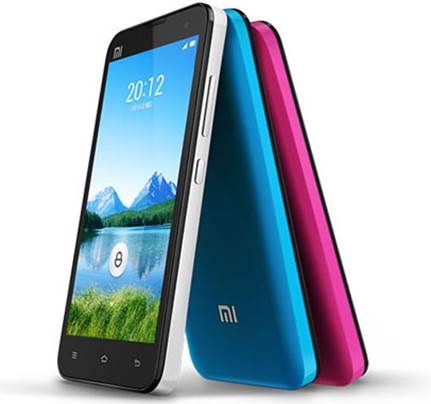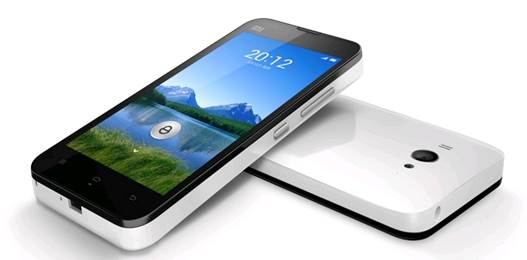As mobile phones have become more powerful,
the prices for many models try to remain where they are: on the top. However,
Xiaomi is always an exception.
In 2012, the new Beijing company launched
the first namesake phone at $320, which was quite impressive based on the fact
that it was the first Chinese device that has the dual-core 1.5GHz MSM8260
Snapdragon chip (please do not confuse with the Krait-based MSM8260A). It stirs
both sides of the smartphone war: the price according to the performance and the
budget. Regarding the performance, we are looking at its competitors like
Huawei, ZTE, Lenovo and Meizu, while a price war is about the power granted by
MediaTek under many new brands – many phones are manufactured so well that
stores are made for them in Shenzhen’s Huaqiangbei area.

Xiaomi
Phone 2
Needless to say, Xiaomi is facing a bigger
challenge – a challenge that only existed only 1 year ago. But on the more positive
side, the company now has three expanded Android devices in two price segments:
two versions of the Xiaomi Phone 1S at $210 and $240, and Xiaomi quad-core Phone
2 – the star of this review at $324, which is lower than the raw cost of $380,
according to what CEO Lei Jun said. Xiaomi certainly can regain some of the
costs from a variety of accessories, and with the upcoming launch of the Xiaomi
TV decoder box next month, it is clear the company is hoping to profit from the
content. However, as our ancestors said, the first impression is very important
(especially for customers outside of China) so please continue reading to see how
we faced Xiaomi’s high-end 2nd generation phone.
Hardware
What makes Xiaomi stand out is that fact
that it always stays in the front line of providing leading specifications at
astonishing low prices, and this time it seems to have overcome itself.
Discounting the initial pre-production units, the Xiaomi Phone 2 is fourth retail
product with APQ8064 Qualcomm Snapdragon S4 Pro, 1 quad-core 1.5GHz Krait SoC that
comes with 2GB RAM and powerful Adreno 320 GPU. At this point, the device has the
16GB and 32GB versions, although unfortunately the old microSD slot is not
available. There is 5GB of MI Drive cloud storage if you want, but it is not on
the same level as Asus’s 50GB or Baidu’s 100GB. Or you can plug in the external
disk through the USB OTG adapter.
In a more positive message, Xiaomi has
included the 4.3-inch IPS screen, excellent 720p from Sharp and JDI, similar to
the screen on the Xperia acro S. There is also an improved 1.8 MP BSI sensor
camera with f/2.0 aperture and video stabilization system. To supply power to
all of this, the phone has removable 2000mAh battery (7.4Wh) beneath the
interchangeable rear cover, and soon users can buy the "super"
3100mAh (11.47Wh) battery with its distinctive cover. No LTE radio is found
here, but you have DC-HSPA + (WCDMA 850/1900/2100) with FM radio, Bluetooth 4.0
and 802.11b/g/n Wi-Fi with Wi-Fi Display.

In
a more positive message, Xiaomi has included the 4.3-inch IPS screen, excellent
720p from Sharp and JDI.

The
default appearance of the phone is the glossy white rear layer in contrast with
the black front.
Xiaomi’s latest high-end phone follows a
slightly different design approach than its predecessor. First, the default
appearance of the phone is the glossy white rear layer in contrast with the black
front. Especially with the straight sides suddenly bending into the back flat
layer, it reminds us of the Meizu MX and 4-core MX. That is, Xiaomi’s six
different color options – magenta, cyan, lime green, yellow, orange and purple
- all look better than the pale crystal cover of Meizu. If, however, we take a
deeper look, we hope that al last Xiaomi will provide pale covers to get rid of
the cheap feel it has now. In addition, the coating will obscure the ridges and
gaps around the logo. However, the phone feels sturdy thanks to the firm cover,
and this remains true even after we pry the cover off several times to replace
the mini-SIM card (located under the battery).
Let's talk about the keys and ports. Below
the screen, you will find three light capacitive menu, home and back buttons.
But, unlike most of the current Android phones, Xiaomi backlight is not deployed
this time. Probably it is not a big problem, but it is not so convenient as
what we were used to seeing on most other Android phones today. Fortunately,
there is an LED indicator – it is located just below the home button instead of
the earpiece edge. Regarding the physical keys, they are located on the right of
the phone: one volume rocker followed by the power button, both of which are metal-like
and beautifully crafted. It has a quite strange arrangement than most other
phones, but we get used to it very quickly.
What about the old versatile two-stage MI keys
under volume rocker? To our disappointment, Xiaomi has determined that it is no
longer needed, which we are sure of that our Myriam would disagree with. You
can still set the volume rocker as the shutter button (as well as the zoom
button), but obviously it will not be so convenient as the real two-stage
shutter button. The rest is the usual 3.5mm headphone jack at the top, a
micro-USB port (MHL and OTG support) at the bottom and on the back a second
microphone for noise reduction (we'll talk about it later).